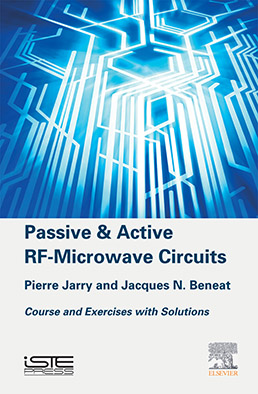
Microwave and radiofrequency (RF) circuits play an important role in communication systems. Due to the proliferation of radar, satellite, and mobile wireless systems, there is a need for design methods that can satisfy the ever increasing demand for accuracy, reliability, and fast development times.This book explores the principal elements for receiving and emitting signals between Earth stations, satellites, and RF (mobile phones) in four parts.
The first part is entirely devoted to the theory and realization of couplers, starting with a recap of fundamental knowledge about microwave coupled lines, defining in particular the even and odd modes, then moving on to applications in microwave systems and challenges that can arise within the system.
The second part explores how to compute and realize microwave and RF filters, investigating the design of different filters by looking at synthesis theory and methods.In the third part, microwave and RF amplifiers are discussed, specifically throughexamples ofdifferent flow graphs, the limits of stability, and noise as a problematic factor in amplifiers, among other topics.
The final part explores microwave and RF oscillators, discussing quasi-static analysis, overvoltage coefficients and extension into non-linear circuits, but also synchronization and the realization of stable oscillators.
Part 1. Microwave Couplers
1. Microwave Coupled Lines.
2. Strip Coupler.
3. Hybrid and Magic T.
4. Problems.
Part 2. Microwave Filters
5. Analysis of a Guide Resonator with Direct Couplings.
6. Electromagnetic (EM) of the Iris.
7. Synthesis of Guide Filters with Direct Coupling.
8. Problems.
Part 3. Microwave Amplifiers
9. Microwave FET Amplifiers and Gains.
10. Stability.
11. Noise.
12. Problems.
13. Quasi-static Analysis and Overvoltage Coefficients of an Oscillator.
14. Synchronization, Pulling and Spectra.
15. Integrated and Stable Microwave Oscillators Using Dielectric Resonators and Transistors.
16. Problems.
Pierre Jarry is Professor at the University of Bordeaux, France and the CNRS laboratory IMS (Intégration du Matériau au Système). His research focuses on the areas of microwave, distributed, multimode and genetic microwave filters, among others.
Jacques N. Beneat is Assistant Professor at Norwich University in Vermont, USA. His research interests include microwave and filter design, radio propagation measurements, and modeling for emerging wireless networks.